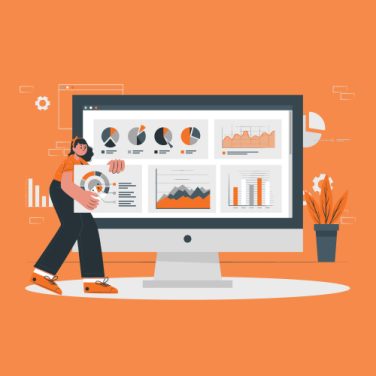A Human Resource Information System (HRIS) is a software solution that consolidates employee data management, benefits administration, payroll integration, time and attendance management, and reporting and analytics into a single platform.
The evolution from paper files and spreadsheets to on-premise databases and now cloud-based platforms has empowered HR teams to eliminate manual workflows, reduce paperwork, and improve compliance.
Modern HRIS platforms support self-service features through mobile apps, allowing employees to update personal details, submit benefits elections, and track hours. Automated processes streamline eligibility determination, payroll calculations, and leave accruals. Real-time dashboards and advanced HR analytics provide insights that drive strategic workforce planning.
By adopting a cloud HRIS, organisations benefit from scalable infrastructure, lower total cost of ownership, and seamless integrations with finance and operations. This guide offers a deep dive into each function of human resource information system and illustrates how MiHCM suite modules map to practical use cases for HR managers, analysts, and IT professionals.
Evolution of HR data management
- Paper-based records and manual data entry
- On-premise HRIS with centralised storage
- Cloud HRIS delivering real-time updates and scalability
At a glance: HRIS functions
This TL;DR outlines the five core functions of a human resource information system and shows how MiHCM delivers end-to-end HR management:
- Employee data management: Centralised records, dynamic org charts.
- Benefits administration: Automated workflows, self-service enrolment.
- Payroll integration: Seamless time, tax, and benefit data import.
- Time & attendance management: Biometric/GPS clock-ins, shift scheduling.
- Reporting and analytics: Pre-built dashboards, predictive insights.
- Automation & compliance: Reduced manual HR workload, improved accuracy.
- Cloud-based scalability: Real-time data, lower TCO.
- MiHCM modules: Lite, Enterprise, Data & AI, Analytics, SmartAssist.
Understanding HRIS: Definition and evolution
An HRIS manages and processes detailed employee information, including personal data, job history, compliance documents, and compensation. Unlike HRMS, which adds talent acquisition and performance management, or HCM suites offering strategic workforce planning and learning modules, a core HRIS focuses on fundamental HR processes.
The earliest systems relied on local databases and required significant IT support. In the 2000s, on-premise HRIS centralised data but still involved manual upgrades and high capital expenditure.
Why cloud matters for HR teams
Cloud-based HRIS platforms remove infrastructure burdens, delivering continuous updates, robust security, and elastic scalability.
Employee self-service portals reduce helpdesk tickets, while API integrations unify HR, payroll, and finance data into a single source of truth.
Real-time visibility into headcount, turnover patterns, and labour costs empowers HR leaders to make data-driven decisions.
Key drivers in evaluating an HRIS include total cost of ownership, compliance capabilities across jurisdictions, user adoption rates, and integration flexibility with existing systems.
HRIS vs. HRMS vs. HCM: Distinguishing core solutions
| Capability | HRIS | HRMS | HCM |
|---|---|---|---|
| Employee data management | Yes | Yes | Yes |
| Payroll processing | Basic | Advanced | Advanced |
| Benefits administration | Yes | Yes | Yes |
| Recruiting & onboarding | No | Yes | Yes |
| Performance management | No | Yes | Yes |
| Learning & development | No | Limited | Yes |
| Strategic planning | No | Limited | Yes |
Use cases:
- HRIS: Core data centralisation and process automation for growing businesses.
- HRMS: Adds talent lifecycle features for organisations needing recruitment and performance tools.
- HCM: Full-suite solution for enterprises requiring strategic workforce planning and learning management.
MiHCM positioning:
- MiHCM Lite: Core HRIS capabilities.
- MiHCM Enterprise: Adds advanced payroll and benefits.
- MiHCM Data & AI, SmartAssist: Embeds predictive analytics and proactive insights.
Key HRIS functions: An overview
Every Human Resource Information System should deliver these interdependent functions:
- Employee data management: Secure repository for personal, job, and compliance information.
- Benefits administration: Automated eligibility, enrolment, open-enrolment workflows.
- Payroll integration: Imports time, tax, and benefit data for accurate compensation calculations.
- Time & attendance management: Clock-in/out tracking, shift scheduling, leave accruals.
- Reporting and analytics: Dashboards, ad-hoc queries, and predictive models.
Modules feed one another: data management powers benefits and payroll accuracy, time tracking ensures labour cost control, and analytics draws insights across all areas.
The MiHCM suite addresses each function holistically via Lite, Enterprise, Data & AI, Analytics, and SmartAssist products.
Employee data management: Centralising records
Centralised employee data management ensures accurate, up-to-date records. MiHCM offers:
- Employee Self-Service through mobile app for profile updates, document uploads, and emergency contacts.
- Centralised employee profiles and org chart with role hierarchies and security controls.
Best practices for data governance
- Define access roles and approval workflows to safeguard sensitive data.
- Implement automated alerts for upcoming certification expirations.
- Schedule quarterly data audits and cleansing routines.
Benefits:
- Improved data accuracy and compliance via audit trails.
- Reduced administrative workload by enabling self-service.
Benefits administration: Automating employee perks
Automated benefits administration simplifies enrolment and compliance. MiHCM delivers:
- Automated benefits administration workflows for eligibility checks and open enrolment.
- Integration with major benefits providers for seamless data exchange.
Managing global benefits plans:
- Configure location-based eligibility rules for international teams.
- Track local regulatory requirements and deadlines.
- Provide multilingual benefits portals for employee self-service.
Benefits:
- Streamlined open enrolment cycles and reduced errors.
- Increased employee satisfaction through transparent self-service.
Payroll integration: Streamlining compensation
Payroll integration ensures timely, accurate compensation. MiHCM features:
- Automated payroll calculations including taxes, overtime, and reimbursements.
- Global payroll management across currencies and jurisdictions.
Ensuring payroll compliance:
- Maintain audit trails for every payroll run.
- Update tax tables and regulatory settings automatically.
- Generate compliance reports for local and international audits.
Benefits:
- Faster payroll processing with minimal manual intervention.
- Reduced payroll errors and compliance risks.
Time & Attendance tracking: Enhancing workforce visibility
Real-time time and attendance management improves labour cost control. MiHCM supports:
- Biometric and geolocation-based clock in/out to prevent buddy punching.
- Automated shift and overtime calculations aligned with labour rules.
Real-time attendance dashboards:
- Monitor clock-in/out activity across locations on live dashboards.
- Identify attendance exceptions and generate exception alerts.
- Manage leave accruals and vacation balances automatically.
Benefits:
- Accurate time tracking and reduced payroll leakage.
- Optimised labour costs through efficient scheduling.
Reporting and Analytics: Driving data-powered decisions
Building custom HR reports – MiHCM’s Analytics module provides:
- Pre-built dashboards for turnover, demographics, and overtime analysis.
- Ad-hoc reporting with advanced filters and export options.
- Predictive analytics for attrition, absence trends, and workforce forecasting.
Embedding insights via SmartInsights brings data-driven recommendations directly into HR workflows. Managers receive proactive alerts when turnover risk spikes or when overtime costs exceed thresholds. Custom scorecards align HR metrics with business objectives.
By leveraging real-time data, HR teams can optimise headcount planning, identify high-potential employees, and monitor compliance metrics. Analytics-driven decisions accelerate workforce productivity and strategic alignment.
Implementation considerations and best practices
A structured rollout ensures HRIS success. Follow these steps:
- Plan: Define objectives, scope, and key stakeholders.
- Design: Map workflows, data fields, and integration points.
- Configure: Set up modules, security roles, and business rules.
- Test: Conduct unit, integration, and user acceptance tests.
- Train: Deliver role-based training and develop user guides.
- Sustain: Provide ongoing support, maintenance, and ROI tracking.
Data migration strategies
- Perform data cleansing and normalisation before import.
- Use staged migration to validate small data sets incrementally.
- Maintain mapping documentation for audit and reconciliation.
Change management
- Engage employees early through demos and pilot groups.
- Offer hands-on workshops and e-learning resources.
- Establish a feedback loop and continuous improvement process.
Ongoing support and periodic upgrades ensure the HRIS adapts to evolving business needs and regulatory changes.
Bringing it all together: Maximising HRIS value
By integrating core functions—employee data management, benefits administration, payroll integration, time and attendance management, and reporting and analytics—a human resource information system delivers strategic benefits: reduced manual workload, improved compliance, enhanced employee satisfaction, and data-driven decision-making.
- Recap: Centralised data, automated processes, real-time insights.
- Select right modules: MiHCM Lite for essentials, Enterprise for global payroll and benefits, Data & AI for predictive insights.
- Next steps: Audit current HR processes, identify gaps, and plan integration phases.
Explore MiHCM HRIS suite demos to see how these modules consolidate workflows and deliver actionable intelligence. Contact sales to schedule a personalised walkthrough.



